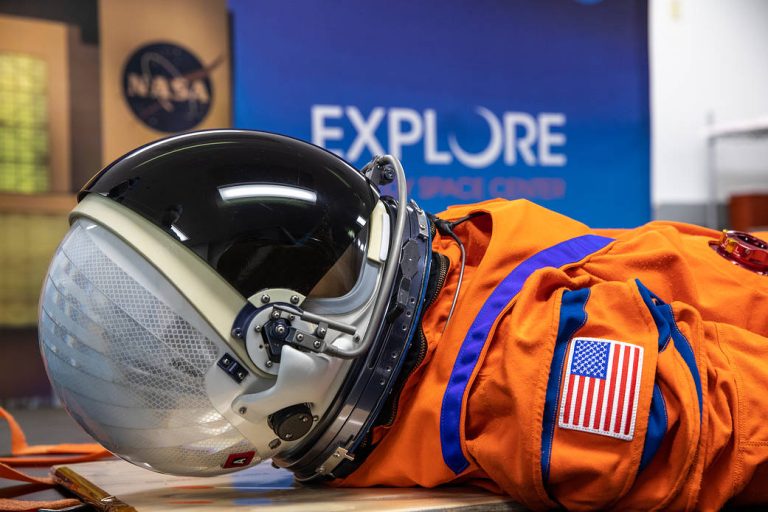NASA’s mission to send astronauts back to the moon and to build a base camp on the moon’s south pole will be one step closer to being achieved following the launch of its Artemis-1 rocket on Aug. 29.
The first test of its Space Launch System (SLS) will be crewed not by astronauts but by three mannequins. Strapped into the commander’s seat on the Orion capsule will be a mannequin, “Commander Moonikin Campos,” named after Arturo Campos, an electrical engineer who played a key role in guiding Apollo 13 safely back to Earth in April 1970.
The mannequin will be wearing the newly developed Orion Crew Survival System spacesuit which will provide NASA scientists with vital data concerning what a human will experience on the long trip to Earth’s only natural satellite.
A series of sensors will be placed around the commander’s seat to record data on acceleration and vibration generated by the launch and trip. In addition, two other sensors will be utilized to measure radiation levels.
In a statement published last year, Jason Hutt, NASA lead for Orion Crew Systems Integration said, “It’s critical for us to get data from the Artemis I manikin to ensure all of the newly designed systems, coupled with an energy dampening system that seats are mounted on, integrate together and provide the protection crew members will need in preparation for our first crewed mission on Artemis II.”
Success
You are now signed up for our newsletter
Success
Check your email to complete sign up
The two other mannequins, named Helga and Zohar, will make the trip in Orion’s two passenger seats.
The mannequins are an engineering marvel. The torsos are made of materials that mimic a woman’s soft tissue, organs and bones, and uses 5,600 sensors and 34 radiation detectors to measure how much radiation astronauts could potentially be exposed to during the trip.
At a news briefing on Aug. 17, Ramona Gaza, team lead at NASA’s Johnson Space Center in Houston said, “When it comes to biological effects, different organs have different susceptibility to space radiation. Understanding the impact is very important for successful and sustainable human space exploration efforts.”
Gaza’s team is researching how women will experience the environment of space “as women in general have a higher risk of developing cancer since they have more radiation-sensitive organs such as breast tissue and ovaries,” she said.
NASA hopes that the information they gather from the mannequins will help prepare astronauts for their mission to orbit the moon on the Artemis 2 in 2024 and for the astronauts who will eventually land on, and explore, the moon in subsequent missions.
Insights gathered by Zohar and Helga are expected to be particularly useful as the Artemis program hopes to land the first woman ever on the moon.

Zero gravity indicators
Astronauts will have some cute company on their trip to the moon. Zero gravity indicators are small items aboard the spacecraft that provide astronauts a visual cue that they have entered a low gravity environment.
A small plushie, inspired by the British TV show “Shaun the Sheep” will travel abroad the Artemis I mission.
In a statement, David Parker, the European Space Agency’s director for human and robotic exploration said, “This is an exciting time for Shaun and for us at ESA. We are woolly very happy that he’s been selected for the mission and we understand that, although it might be a small step for a human, it’s a giant leap for lambkind.”
This is not the plushies first mission.
“Shaun” soared aboard a special Airbus “Zero G” A310 that creates the gravity free conditions one would experience in space. Shaun flew as a low gravity indicator in the capsule of the aircraft.
Shaun will also have company in the form of another plushie, Snoopy, the infamous Peanuts character and loyal friend of Charlie Brown.
According to NASA, Snoopy has a long history of space travel. The Apollo 10 lunar module got the nickname “Snoopy” “because its job was to snoop around and scout the Apollo 11 landing site on the moon,” Business Insider reported.
The Snoopy plush doll has reportedly been designed according to strict specifications dictated by NASA and will help alert the team once the capsule has reached a low gravity environment.
In addition to Shaun, Snoopy, Commander Moonikin Campos, Helga and Zohar, four Lego figurines will be making the trip as well.
The figurines are included in Lego’s new “Build to Launch” series, which was designed in collaboration with NASA and is intended to inform students about different concepts and careers associated with the Artemis missions.
In a statement, published in November last year, Lego Education said, “Each minifigure represents a real-life counterpart, such as a command pilot Kate and mission specialist Kyle, to help students better understand the diverse roles, backgrounds, and skillsets within the Artemis I team.”

















